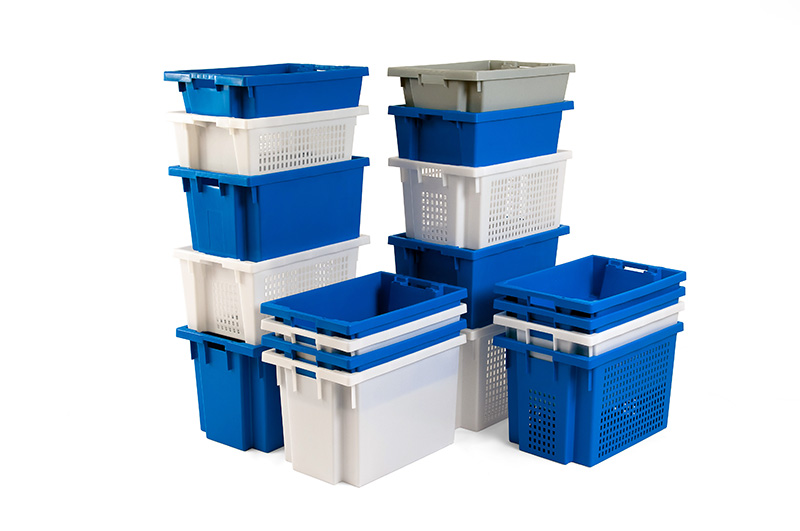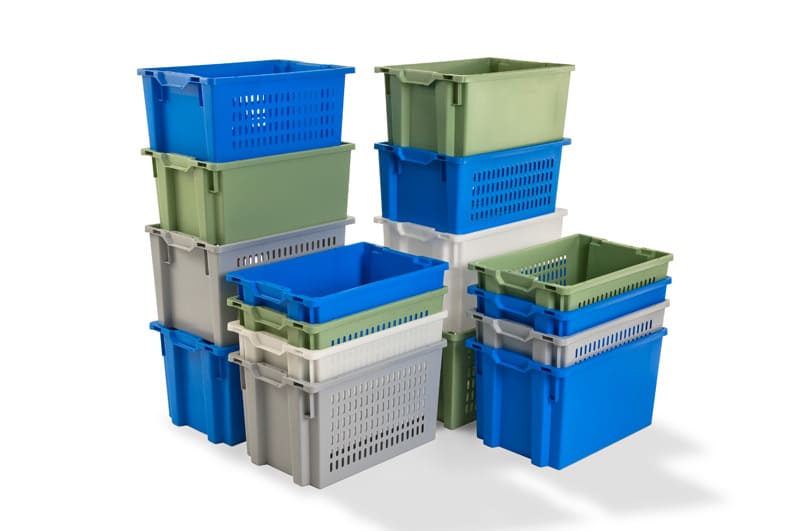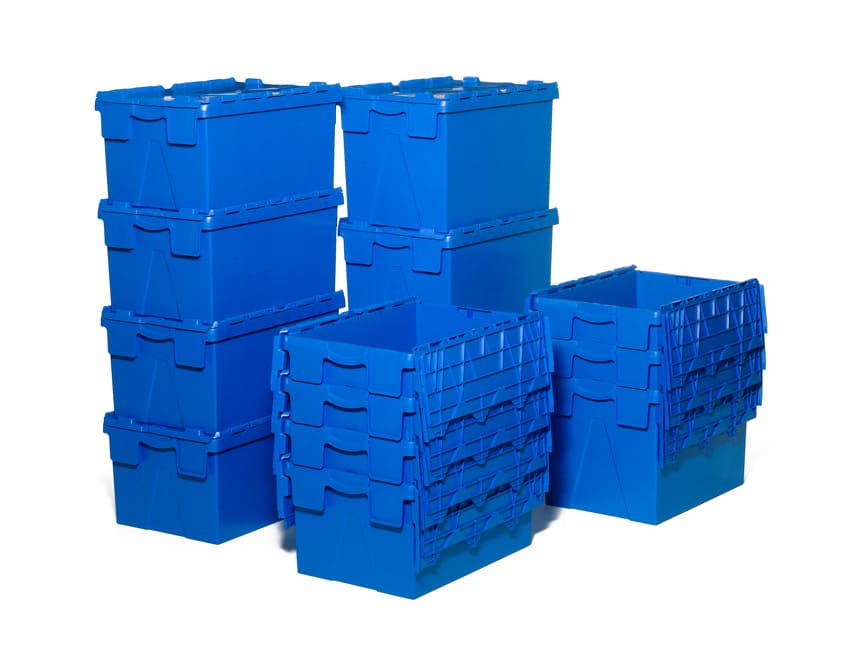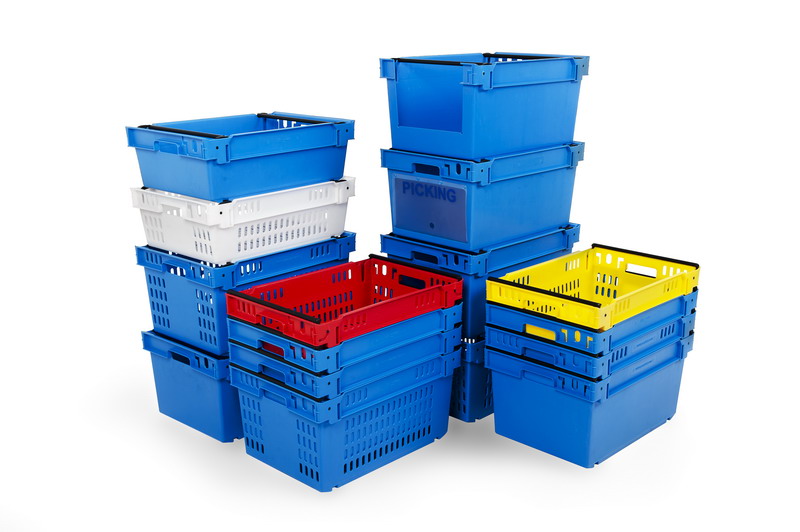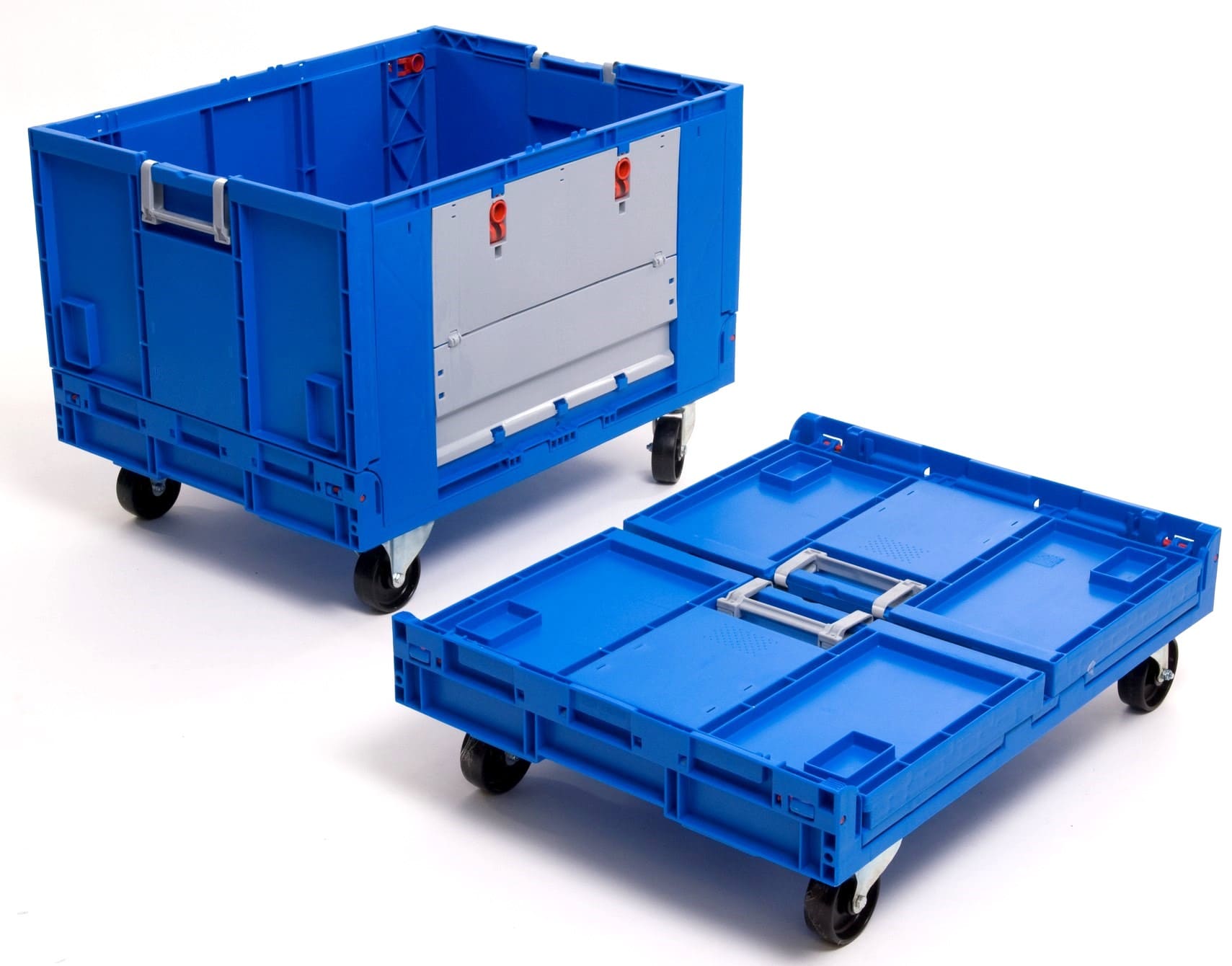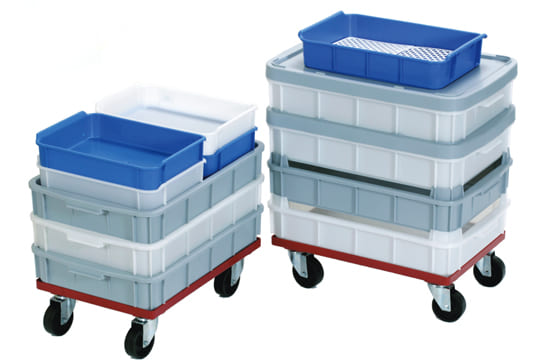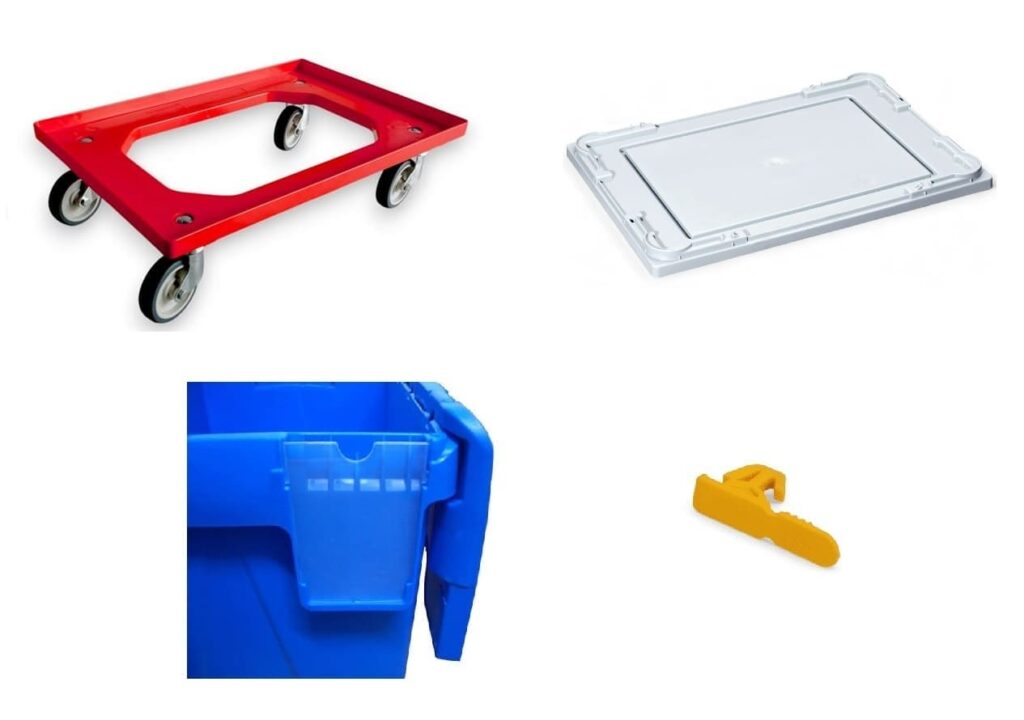Plastic boxes
Home » Plastic boxes
Accessories
Plastic boxes are durable and reusable packaging solutions designed for storing and transport.
Available in various sizes, in stackable, nestable, foldable, solid, or perforated versions, they help optimise organisation and workflows in the industrial and logistics sectors.
Our range of plastic boxes
We produce boxes suited to various industrial and logistical needs.
– Stack and nesting boxes: Solid or perforated, with or without apertures below the handles. Ideal for stacking when the box is full, and nesting when empty for space saving.
– ALC Attached lid boxes: Widely used for the distribution of products such as perfumes, medicines, etc. These can be stacked with the lids closed and nested when empty.
– Nesting and stacking boxes on bale-arms: Offer a larger useful volume compared to boxes without bale-arms.
– Folding boxes: These are large boxes (800x600mm). They allow for optimised storage space when empty and folded. Roll-container modules enable handling of larger volumes due to the absence of bottoms. This range is widely used for picking in industry or large retail stores.
– Stacking boxes: Among others, we offer perforated or solid boxes specially designed for transporting cakes, bread, biscuits, etc.
– Nesting boxes: Allow for space optimisation both in storage and transport when empty. Hence their use in X-ray screening at airports.
– Lid for boxes, Dollies, Tamper evident seals, Label windows, etc.
Our boxes are manufactured in a limited range of standard colours. We also have other dyes in stock that allow us to produce non-standard coloured products from certain quantities.
Production in non-standard colours generates a considerable amount of waste (rejected pieces during colour changes, which we must regranulate for recycling, using it for darker coloured products, such as waste containers); therefore, the price of non-standard coloured items is always higher than for standard colours.
Custom colour manufacturing (Pantone or RAL) can also be considered, but minimum quantities will be significantly higher due to the need for colour matching and the production of a minimum amount of pigment.




